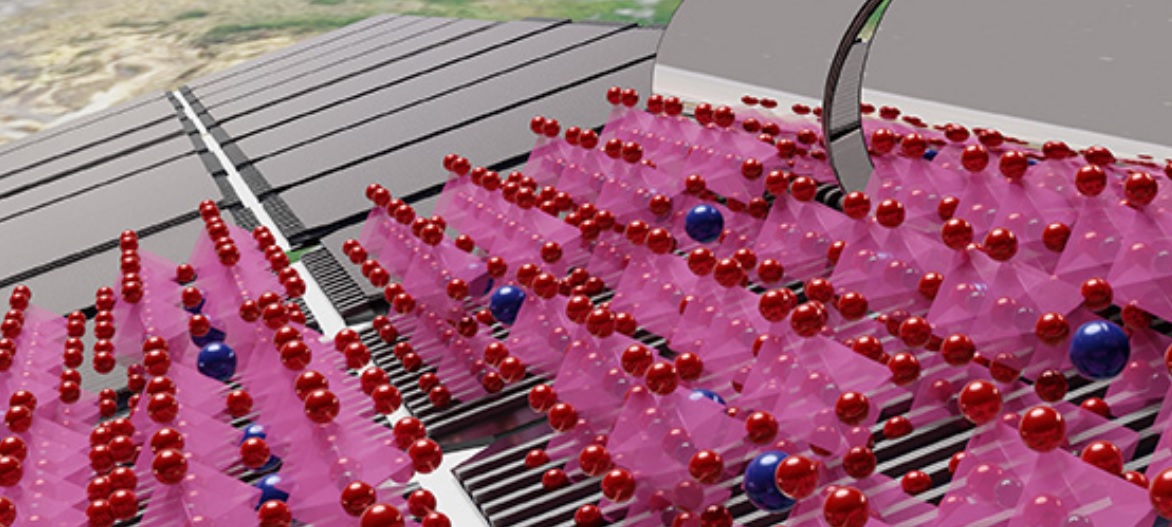Perovskites are of interest in space applications because they are a lower-cost and lightweight option to other technologies, and they have the potential to achieve efficiencies similar to those of current space technologies. In space applications, however, perovskites would be exposed to protons, alpha particles, atomic oxygen and other stressors. The NREL research is the latest effort to determine how perovskites can meet these challenges.
The biggest challenges on Earth are related to weather, but in space perovskites must address the problems that come from radiation bombardment and extreme temperature swings. Perovskites show signs of tolerating radiation better than many other solar cells, but more testing is needed in that area.
Researchers last year ran simulations to demonstrate how exposure to radiation in space would affect perovskites. The scientists determined that perovskites would work in space, but would need to be encapsulated in some way for protection against the elements. would work in space but pointed out the need to encapsulate the cell in some way to provide added protection.
In the follow-up research they found that a micron-thick layer of silicon oxide, about 100 times thinner than a typical human hair, might be all that is needed. Ahmad Kirmani, lead author of the latest Nature Energy paper, said the silicon oxide layer could reduce the weight of conventional radiation barriers used for other solar cells by more than 99% and serves as a first step toward designing lightweight and low-cost packaging for perovskites.
While high-energy protons travel through perovskites without causing harm, low-energy protons are more abundant and damaging. The researchers found that the silicon oxide layer protected the perovskite from damage by low-energy protons.
“We thought it would be impossible for the silicon oxide to provide protection against fully penetrating long-range particles such as the high-energy protons and alpha particles,” Kirmani said. “However, the oxide layer turned out to be a surprisingly good barrier against those as well.”
Unprotected perovskite solar cells were found to lose only about 15% of their initial efficiency when exposed to low-energy protons, and a larger concentration of particles destroyed the cells. The perovskites, however, demonstrated what the scientists described as “a remarkable resilience.” With the simple barrier, the cells showed no damage.
The team made up of researchers from NREL, University of North Texas and the University of Oklahoma, demonstrated that a silicon oxide layer can harden perovskite photovoltaics against critical space stressors. They found that a 1-μm-thick silicon oxide layer evaporated atop the device can block protons without a loss in power conversion efficiency, which results in a device lifetime increase in low Earth orbit by 20x and in highly elliptical orbit by 30x. They also found that silicon-oxide-protected cells will survive water submersion, and were found to retain power conversion efficiencies on exposure to alpha irradiation and atomic oxygen.
In addition to making the cells more resilient in space, the researchers also tested how the barrier could protect against an uncontrolled moisture and temperature environment for several days to mimic storage conditions. The protected cells retained their initial 19% efficiency, while the unprotected cells showed significant degradation, from 19.4% to 10.8%. The oxide layer also provided protection when exposed to water.
The researchers further subjected perovskite solar cells to bombardment by ultraviolet photons, similar to the environment in low-Earth orbit. The unprotected cells were destroyed after eight minutes, but the protected cells retained their initial efficiency after 20 minutes and only had a slight drop after 30 minutes.
Through the simulations and experiments, the researchers found that by reducing the damage from radiation, the lifetime of the protected solar cells used in Earth’s orbits and deep space would be increased from months to years. With the protective layer of silicon oxide, perovskites could be used for space as well as terrestrial applications.
Funded by the U.S. Department of Defense’s Operational Energy Capability Improvement Fund (OECIF), the NREL research was done for the Air Force Research Laboratory (AFRL) with the aim of developing low-cost innovative energy sources that can power the armed forces worldwide.
This content is protected by copyright and may not be reused. If you want to cooperate with us and would like to reuse some of our content, please contact: editors@pv-magazine.com.









By submitting this form you agree to pv magazine using your data for the purposes of publishing your comment.
Your personal data will only be disclosed or otherwise transmitted to third parties for the purposes of spam filtering or if this is necessary for technical maintenance of the website. Any other transfer to third parties will not take place unless this is justified on the basis of applicable data protection regulations or if pv magazine is legally obliged to do so.
You may revoke this consent at any time with effect for the future, in which case your personal data will be deleted immediately. Otherwise, your data will be deleted if pv magazine has processed your request or the purpose of data storage is fulfilled.
Further information on data privacy can be found in our Data Protection Policy.